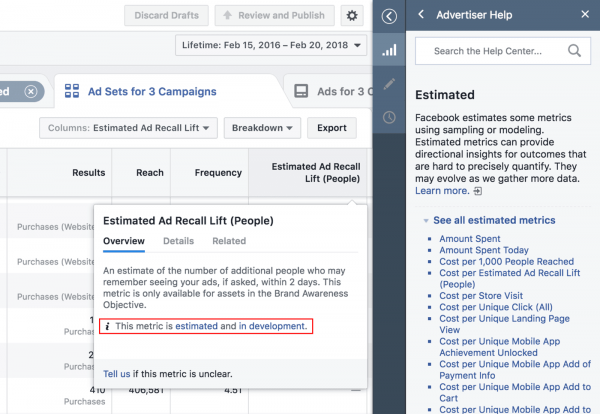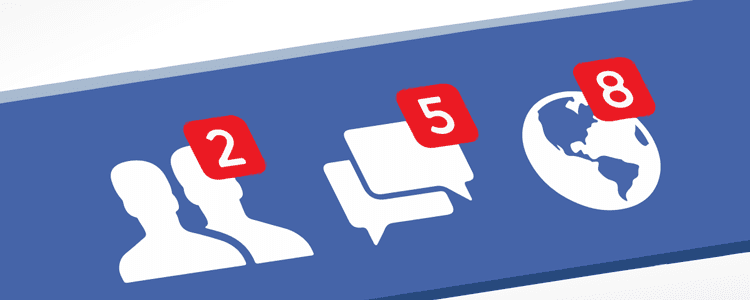Facebook is getting a facelift.
Well, at least its metrics are. On Wednesday, February 22, Facebook announced in an official blog post that it will begin removing ad metrics “that marketers have told us are redundant, outdated, not actionable or infrequently used.” They will be replacing these metrics with newer ones that they have labeled as “estimated” and/or “in development”.
All these changes will be coming into full effect sometime in July 2018.
The goal with this shift is to improve transparency and to clear up advertiser confusion on the platform. The changes come in light of the company admitting to a series of measurement problems over the past two-or-so years; problems that have led to advertisers losing faith in the consistency of Facebook’s data.
In a move that expresses this sense of transparency, the company has published a list of all the metrics they will be removing and why, as well as recommendations for alternative methods of measurement for each.
For example, they will be removing “button clicks” metric, which shows the number of times people clicked the call-to-action button on a given ad. According to Facebook, “Button Clicks is redundant because these clicks are also either reflected in the ‘Link Clicks’ metric or other distinct metrics like the ‘Event Responses’ metric and the ‘Offers Saved Metric’. In short, while they are updating their metrics, they are also getting rid of the ones seen as duplicates.
As for the 18 other, outdated metrics, we have:
- Actions, People Taking Action, Cost per Action: a composite of various actions and events, such as engagement, clicks or conversions. Facebook’s recommendation is that you customize your own composite metrics, instead of using “Actions” from this point forward.
- Amount Spent Today: a measure of how much money you’ve spent on your campaign starting on a given day. Facebook recommends that you use their “dynamic date selector” instead.
- Canvas Component Time Percentage: The average percentage of time spent viewing each component of a Facebook Canvas. Use the “Canvas View Times” and the “Canvas View Percentage” metrics instead.
- Carousel Card: Infrequently used metric formerly titled “Website Conversions”. You can now see the carousel card under the “Link Clicks” section.
- Link Click Destination: a way to measure which clicks lead people to destinations off Facebook. Moving forward, you can use the metrics titled “Outbound Clicks” and “Landing Page Views”.
- Mobile App Actions Conversion Value: a metric based on the value you assigned to an app action when you set up the app event. Facebook recommends that you use specific app event conversion values instead.
- Page Mentions, Cost per Page Mention: a way of evaluating campaign performance that was not indicative of either positive or negative sentiment towards your brand. To measure the success of your “Pages Likes” campaign, use the “Page Engagement” metric instead.
- Page Tab Views, Cost per Page Tab View: a metric that indicated the number of views of tabs on your Facebook Page that are attributed to your ads. Using “Pages Likes” and “Page Engagement” is much more effective.
- Positive Feedback, Negative Feedback: a metric that created more confusion than useful insights. Facebook recommends that you use their “Relevance Score” metric instead.
- Social Reach, Social Impressions, Social Clicks (all), Unique Social Clicks (all): outdated metrics that show the number of people who saw an ad when displayed with social information. The company recommends that you use “Reach” instead of “Social Reach” ad “Impressions” instead of “Social Impressions”.
When it comes to calculating the metrics labeled as “estimated,” Facebook will be using data modeling or sampling. These labels will appear in the “tools tips” bar within the Ads Manager reporting table, and in the customize column section for ads running on Facebook, Instagram, and Audience Network.

The metrics labeled as “in development,” are either being tested or are in the process of being rolled out; meaning that they will all still be subject to change if Facebook notices any redundancy. According to the company, the new metrics (which we assume will be developed alongside yet-to-be-announced ad features) are typically in development for 60 days, although we suspect that it will take longer.
Facebook has also announced a new program, effective In March of this year, called “Measure What Matters.” It will combine in-person events, online events (such as Facebook Business and Facebook Live), and online content in order to give advertisers more information about how to measure and improve their campaigns. This initiative is designed to give advertisers an edge on an already wildly-popular platform.
Facebook has taken marketers’ opinions into consideration, and are on the path to cleaning up the metrics that the majority of people have deemed redundant. You can see the full list of what they’re getting rid of here.
Don’t forget to share this article

